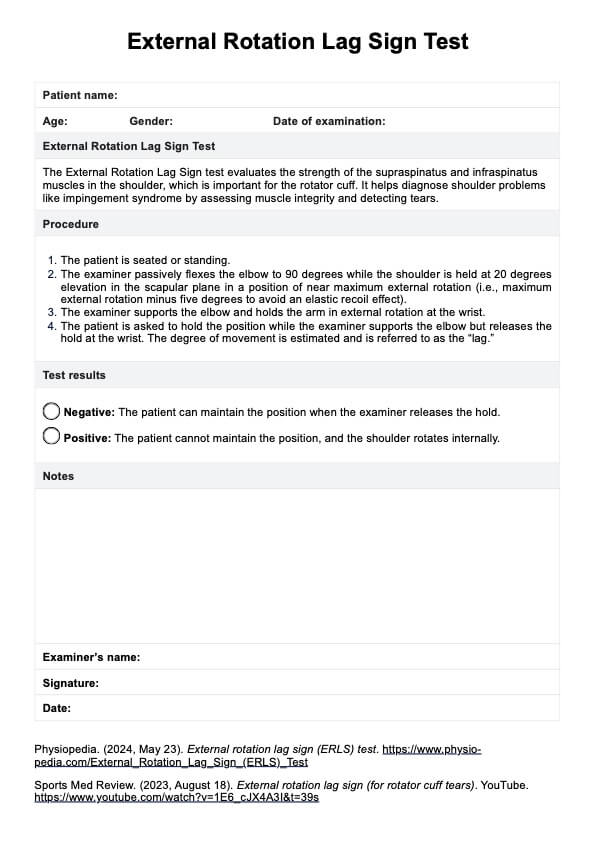A positive External Rotation Lag Sign indicates that the patient cannot maintain the shoulder in an externally rotated position.

External Rotation Lag Sign
Learn how to perform and score the External Rotation Lag Sign test for rotator cuff tears.
Use Template
External Rotation Lag Sign Template
Commonly asked questions
Treatment options for rotator cuff tears include non-surgical treatment (physical therapy, rest, steroid injections) and, if necessary, surgical repair.
Proper conditioning, strengthening exercises, and avoiding excessive overhead activities can prevent rotator cuff tears in athletes.
EHR and practice management software
Get started for free
*No credit card required
Free
$0/usd
Unlimited clients
Telehealth
1GB of storage
Client portal text
Automated billing and online payments











